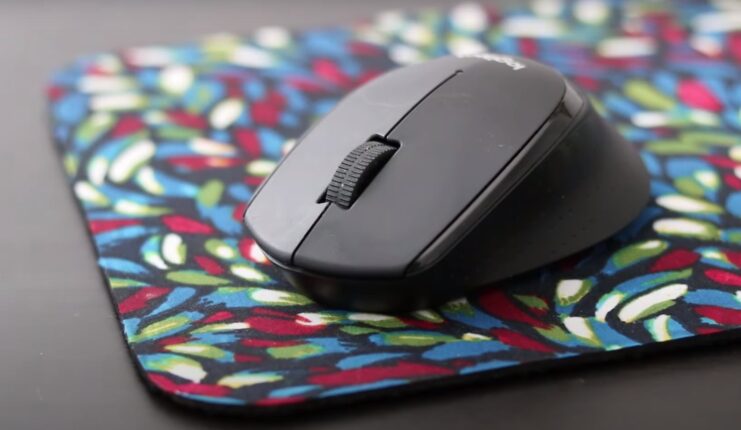Looking for mouse pad alternatives that won’t break the bank? Keep reading!
A computer mouse is a crucial component of any computer system, managing all input to the device. A malfunctioning mouse can lead to a failing computer system, so it’s essential to keep your mouse in top condition.
Someone once, suggests that alternative mice, such as roller mice, pen mice, joystick mice, and trackball mice, can alleviate wrist and arm strain. Now that we’re discussing alternatives, let’s dive into mouse pad substitutes.
Modern mouse models have come a long way from their wired, silicon rubber roller predecessors. Now, we have optical mice with LED lights and laser mice with laser lights. Wired mice have mostly become a thing of the past, replaced by Bluetooth-connected wireless mice. However, a proper mouse pad is still necessary.
What type of surface is suitable for a mouse pad?
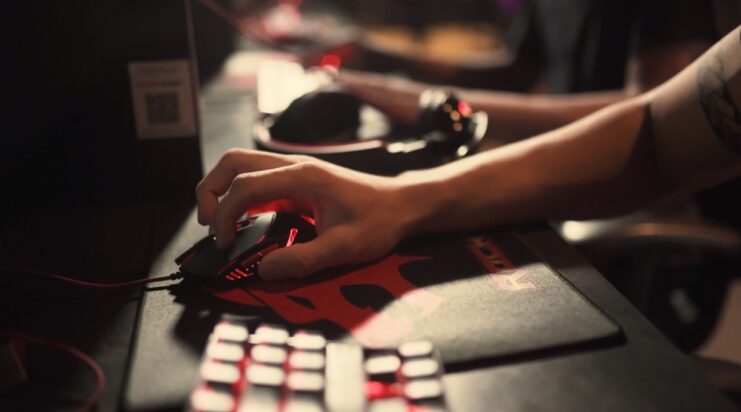
The majority of your computer work is done through your mouse. When considering mouse pads, the first question that comes to mind is: what types of surfaces are suitable? Mouse functionality relies heavily on the surface it is used on.
Different purposes require different surfaces. For gaming, a surface made from plastic, glass, aluminum, or carbon fiber is recommended. The same applies to graphic design and photo manipulation tasks. While many people disregard mouse pads due to the prevalence of advanced optical sensor mice, even these mice can malfunction without a pad.
Mouse pad surfaces come in two types: hard and soft. A mouse moves quickly on a hard surface, while a soft surface provides greater control.
Ultimately, your mouse pad’s surface should be even and have a consistent texture. Choose the surface according to your needs to ensure a long-lasting mouse.
While ensuring a smooth mouse experience is crucial, gamers should also be aware of the importance of monitoring their computer’s CPU temperature, especially during intense gaming sessions, to prevent overheating and potential damage.
11 Mouse Pad Alternatives
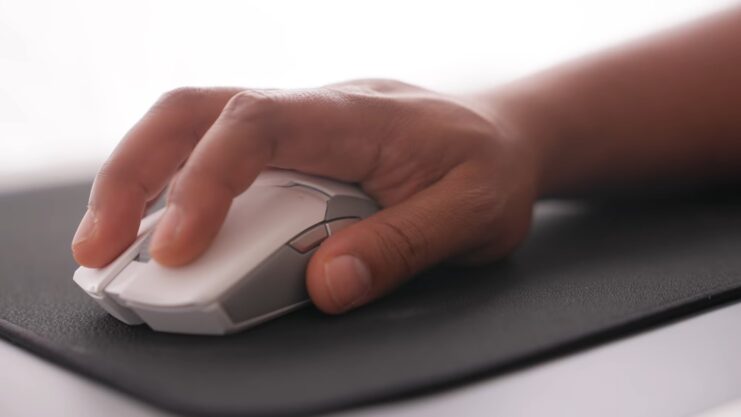
Sometimes, you might not have a mouse pad when you need one. Fortunately, there are many alternatives. Some might even be familiar to you. While modern mice are portable, mouse pads are not.
People are constantly on the go with their laptops, often forgetting to bring a mouse pad. Many laptop users need a mouse because touchpads aren’t suitable for their needs. If you find yourself without a mouse pad while traveling, consider these alternatives:
- A Magazine: Opt for thicker magazines that have smooth, flat surfaces, as these provide a better tracking experience for your mouse. Glossy pages are particularly suitable, and the added weight of the magazine ensures stability during use.
- Paper: Stack several sheets of paper together to create a makeshift mouse pad. This option is convenient and easily accessible. However, if you tend to have sweaty hands, you might need to replace the paper stack more frequently to maintain a smooth and consistent surface.
- Cardboard: Although cardboard might not be as smooth as other alternatives, it can be an excellent emergency option due to its thickness and sturdiness. Cut a piece of cardboard to your desired size and make sure it lies flat on your working surface.
- Dining table mats or any table mats: Table mats with smooth surfaces can double as effective mouse pads. Look for mats made from materials like plastic, silicone, or vinyl, which provide a consistent tracking experience for your mouse.
- Folder: Folders, especially those with a hard and smooth exterior, can serve as a great mouse pad alternative for students and office workers. They’re easy to carry around and offer a consistent surface for your mouse to glide on.
- Duct tape: Get creative with duct tape and make your own DIY mouse pad. Cut several equal-length pieces and stick them side by side, and front to back, on a flat surface. You can even customize the design to suit your preferences.
- Wax Paper: Wax paper, commonly found in kitchens, can be repurposed as a mouse pad due to its smooth surface. Simply cut a strip or square from the roll and place it on your work area.
- A hardcover book: Larger hardcover books are ideal, but any size will suffice in an emergency. The hard surface of the book cover provides stability and allows your mouse to glide smoothly.
- The wood desk: If your wooden desk has a smooth and even surface, you can use it as a mouse pad. Make sure there are no bumps or irregularities that could affect your mouse’s performance.
- Bedsheet: In a pinch, a bedsheet can serve as a mouse pad. Smooth out any wrinkles, and ensure the fabric is lying flat to provide a consistent surface for your mouse to move on.
- Lap: While it might seem odd, your lap can function as a mouse pad in an emergency. It may not be the most comfortable or convenient option, but it’s better than having no surface at all when you need to get work done. Just
Experiment with these alternatives to see which one works best for you.
Surfaces to Avoid
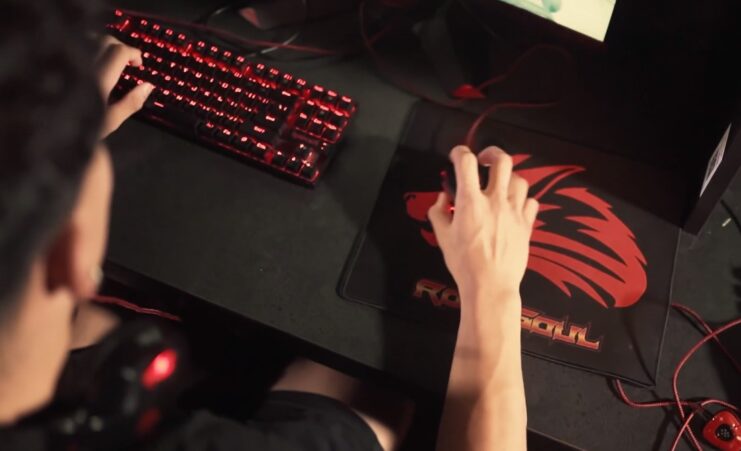
Taking care of your mouse ensures its longevity. Using a mouse pad can make a noticeable difference, even when using a modern optical sensor mouse.
In the long run, using a mouse without a mouse pad is not recommended. Initially, mouse pads were made of specific surfaces, but as technology advanced, the variety increased.
- The surface has a significant impact on mouse performance. Smooth and reflective surfaces can cause jittering and loss of tracking when the mouse is moved across them. As a result, you should avoid using a mouse on highly polished wood or glass surfaces.
- Do not use your mouse on glass tables, tables with glossy or reflective surfaces, or mirrors. As previously mentioned, the surface underneath the mouse should be relatively smooth. Therefore, you should avoid excessively smooth or bumpy surfaces.
Soft fabrics, like the fabric arm of a couch, won’t provide the necessary sensor for the mouse. We’ve often been advised to keep our computer tables clean. A dirty surface has a severe impact on mice with rollers. Moving the mouse across a dirty surface would cause dirt to enter the mouse. While our mice no longer have balls or rollers, it’s still not a good idea to use them on dirty surfaces. A dirty or rough surface can increase friction between the mouse and the surface, damaging the mouse’s exterior and negatively affecting its functionality. - You should not use an optical mouse on glossy surfaces, as it will only sense its reflection. Thus, a mouse pad is recommended when using an optical sensor mouse. Laser mice, on the other hand, use a laser sensor instead of an LED light to track movements, allowing them to work on most surfaces, including shiny ones. However, they don’t work well on tissue-like surfaces, whereas optical mice can.
Can I use a mouse without a mouse pad?
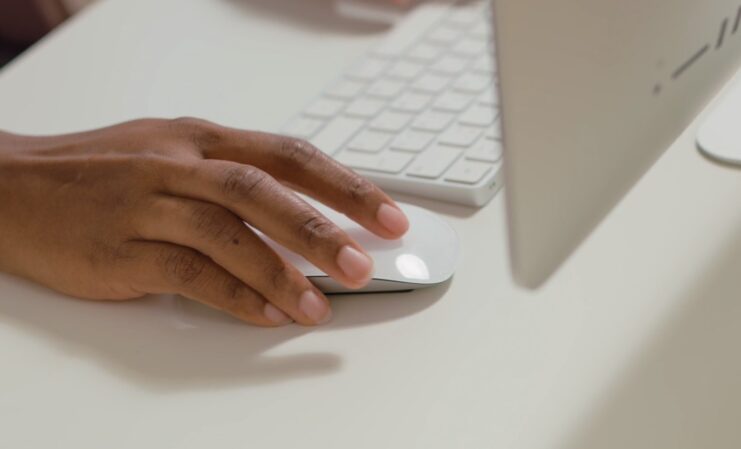
Often, you don’t need a mouse pad, as the rubber ball doesn’t need to grip the surface to move. However, if you’re using your mouse on a semi-reflective or fully reflective surface, you will need a mouse pad.
Taking proper care of your mouse will enhance its functionality and your computer’s overall performance. When you don’t have an actual mouse pad, use one of the mouse pad alternatives mentioned above.
You might also be interested in understanding the key differences between two major types of memory storage and how to choose the right one for your needs.
FAQs
Conclusion
While a traditional mouse pad is specifically designed for optimal mouse tracking and prolonged mouse life, there are various alternatives available for those who find themselves without one. These alternatives can range from magazines and stacks of paper to hardcover books and even your lap.
Although some of these options may work well temporarily, it is always recommended to use a proper mouse pad for long-term use. By selecting the appropriate surface according to your needs and ensuring proper care, you can keep your mouse functioning smoothly and efficiently for an extended period.

